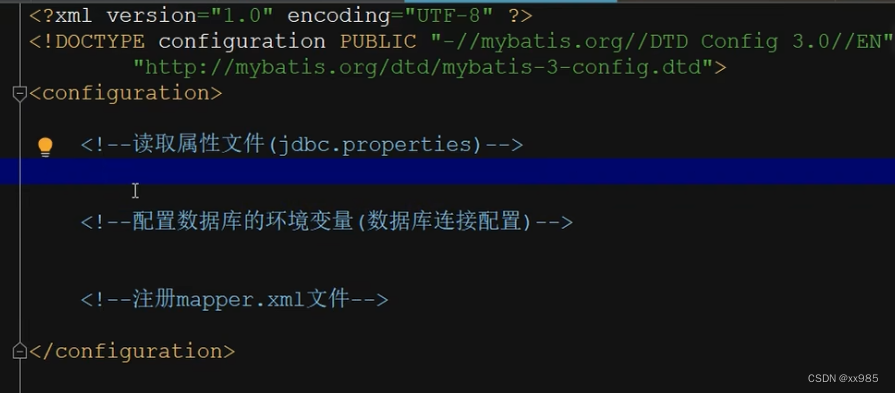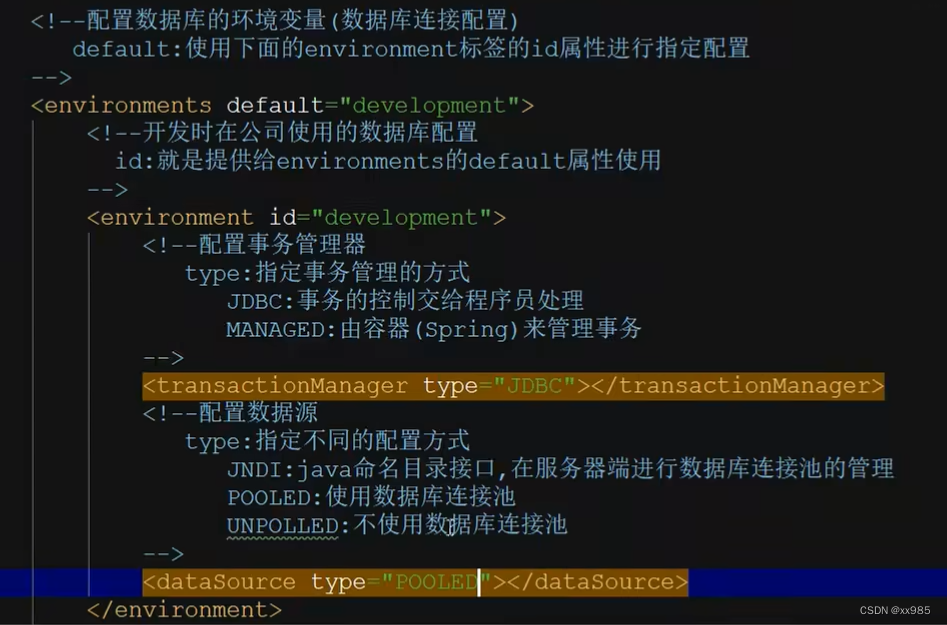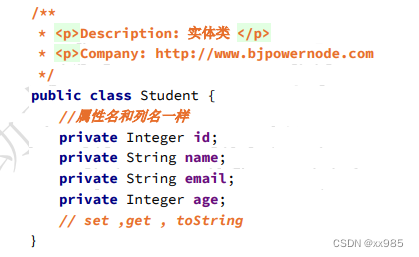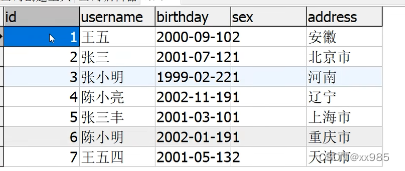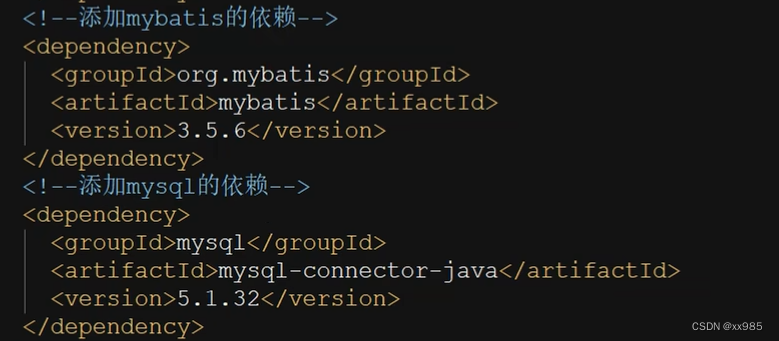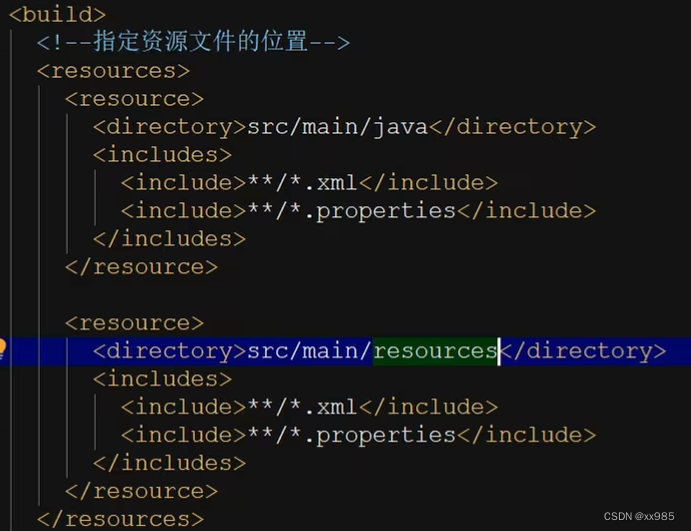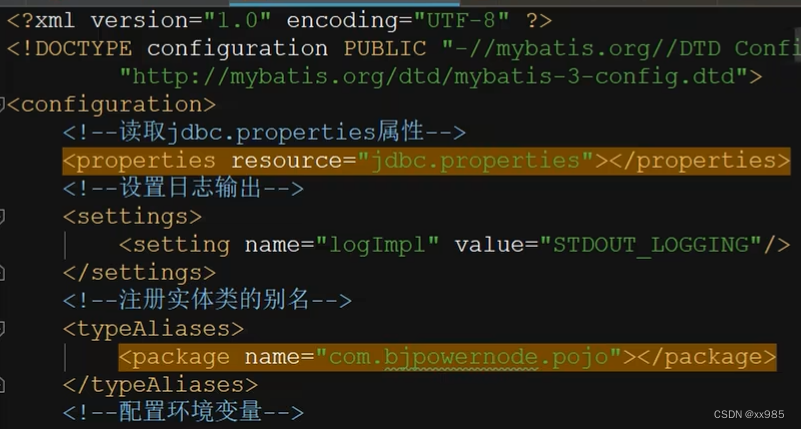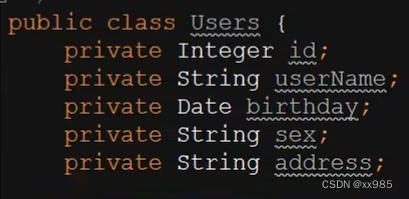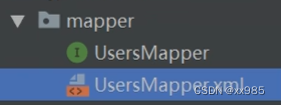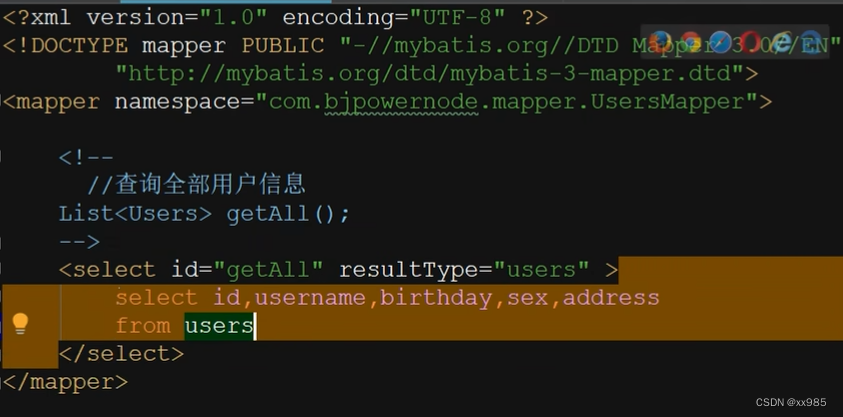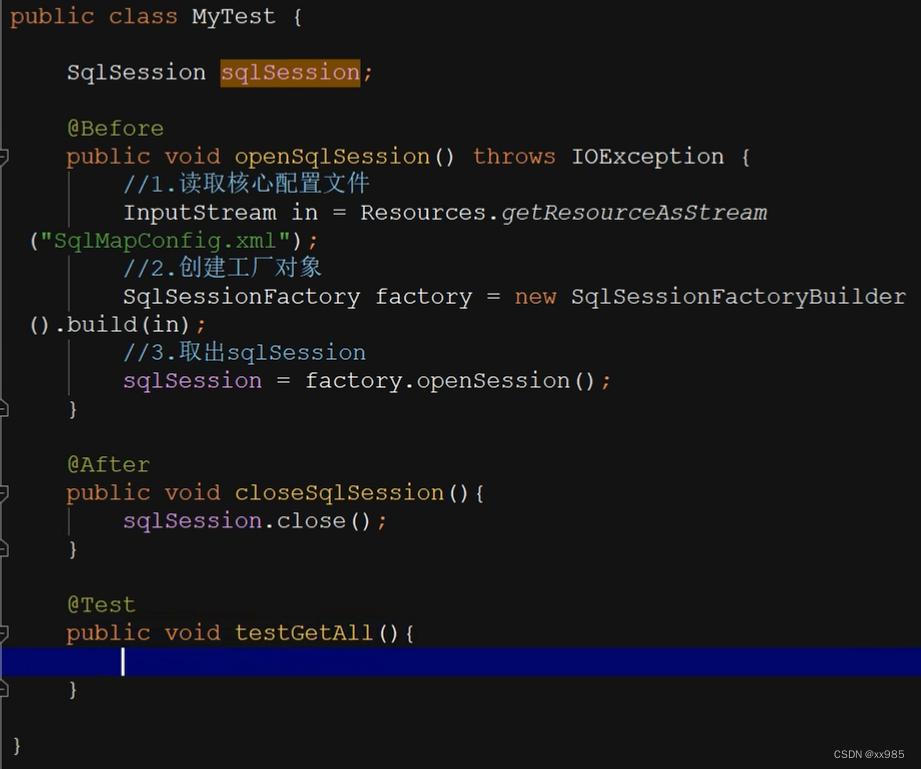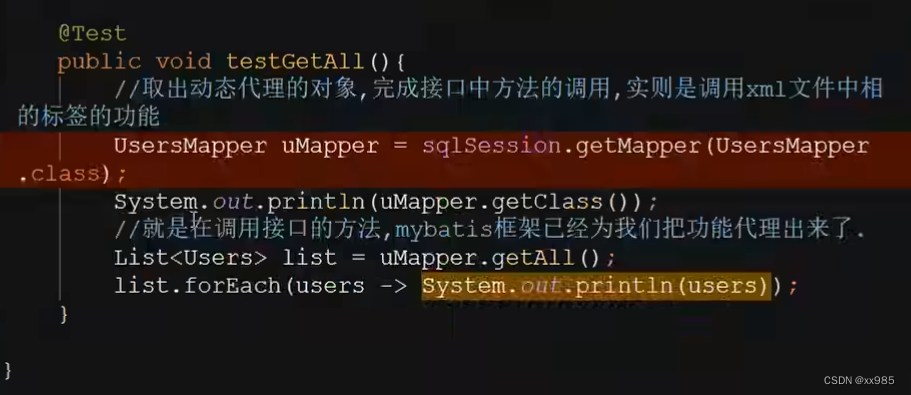什么是三层架构
在项目开发中,遵循的一种形式模式.分为三层.
- ? 1)界面层:用来接收客 户端的输入,调用业务逻辑层进行功能处理,返回结果给客户端.过去的servlet就是界面层的功能.
- ? 2)业务逻辑层:用来进行整个项目的业务逻辑处理,向上为界面层提供处理结果,向下问数据访问层要数据.
- ? 3)数据访问层:专门用来进行数据库的增删改查操作,向上为业务逻辑层提供数据.
? 各层之间的调用顺序是固定的,不允许跨层访问.
? 界面层<------->业务逻辑层<------>数据访问层
常用的框架SSM
- ? Spring:它是整合其它框架的框架.它的核心是IOC和AOP.它由20多个模块构成.在很多领域都提供了很好的解决方案.是一个大佬级别的存在.
- ? SpringMVC:它是Spring家族的一员.专门用来优化控制器(Servlet)的.提供了极简单数据提交,数据携带,页面跳转等功能.
- ? MyBatis:是持久化层的一个框架.用来进行数据库访问的优化.专注于sql语句.极大的简化了JDBC的访问.
什么是框架
它是一个半成品软件.将所有的公共的,重复的功能解决掉,帮助程序快速高效的进行开发.它是可复用,可扩展的.
什么是MyBatis框架
MyBatis 本是 apache 的一个开源项目iBatis
2010 年这个项目由 apache software foundation 迁移到了 google code,并且改名为 MyBatis? 。
2013 年 11 月迁移到 Github,最新版本是 MyBatis 3.5.7 ,其发布时间是 2021 年 4月 7日。
MyBatis完成数据访问层的优化.它专注于sql语句.简化了过去JDBC繁琐的访问机制.
添加框架的步骤
? 1)添加依赖
? 2)添加配置文件
? 具体步骤:
? 1.新建库建表
? 2.新建maven项目,选quickstart模板
? 3.修改目录,添加缺失的目录,修改目录属性
? 4.修改pom.xml文件,添加MyBatis的依赖,添加mysql的依赖
? 5.修改pom.xml文件,添加资源文件指定
? 6.在idea中添加数据库的可视化
? 7.添加jdbc.properties属性文件(数据库的配置)
? 8.添加SqlMapConfig.xml文件,MyBatis的核心配置文件
? 9.创建实体类Student,用来封装数据
? 10.添加完成学生表的增删改查的功能的StudentMapper.xml文件
? 11.创建测试类,进行功能测试
<!--添加依赖 --> <!-- 添加mybatis的依赖--> <dependency> <groupId>org.mybatis</groupId> <artifactId>mybatis</artifactId> <version>3.5.1</version> </dependency> <!-- 添加数据库驱动的依赖--> <dependency> <groupId>mysql</groupId> <artifactId>mysql-connectorjava</artifactId> <version>8.0.22</version> </dependency> </dependencies><!-- 指定资源位置: --> <build> <resources> <resource> <directory>src/main/resources</directory> <includes> <include>**/*.xml</include> <include>**/*.properties</include> </includes> <filtering>false</filtering> </resource> <resource> <directory>src/main/java</directory> <includes> <include>**/*.xml</include> <include>**/*.properties</include> </includes> <filtering>false</filtering> </resource> </resources> </build>?config.xml
<?xml version="1.0" encoding="UTF-8" ?> <!DOCTYPE configuration PUBLIC "-//mybatis.org//DTD Config 3.0//EN" "http://mybatis.org/dtd/mybatis-3-config.dtd"> <configuration> </configuration>
?
实体类
?
StudentMapper.xml文件
<!-- namespace:必须有值,自定义的唯一字符串 推荐使用:dao 接口的全限定名称 --> <mapper namespace="com.dao.StudentDao"> <!-- 完成查询全部学生的功能 List<Student> getALL(); resultType:指定查询返回的结果集的类型,如果是集合,则必须是泛型的类型 parameterType:如果有参数,则通过它来指定参数的类型 --> <select id="getAll" resultType="com.bjpowernode.pojo.Student" > select id,name,email,age from student </select> <!-- 按主键id查询学生信息 Student getById(Integer id); --> <select id="getById" parameterType="int" resultType="com.bjpowernode.pojo.Student"> select id,name,email,age from student where id=#{id} </select> <!-- 按学生名称模糊查询 List<Student> getByName(String name); --> <select id="getByName" parameterType="string" resultType="com.bjpowernode.pojo.Student"> select id,name,email,age from student where name like '%${name}%' </select> <!-- 增加学生 int insert(Student stu); 实体类: private Integer id; private String name; private String email; private Integer age; --> <insert id="insert" parameterType="com.bjpowernode.pojo.Student"> insert into student (name,email ,age) values(#{name},#{email},#{age}) </insert> <!-- 按主键删除学生 int delete(Integer id); --> <delete id="delete" parameterType="int" > delete from student where id=#{id} </delete> <!-- 更新学生 int update(Student stu); --> <update id="update" parameterType="com.bjpowernode.pojo.Student"> update student set name=#{name},email=#{email},age=#{age} where id=#{id} </update> </mapper>// 测试类 @Test public void testUpdate()throws IOException { //1.使用流读取核心配置文件 InputStream in = Resources.getResourceAsStream("Config.xml"); //2.创建SqlSessionFactory工厂对象 SqlSessionFactory factory = new SqlSessionFactoryBuilder().build(in); //3.取出SqlSession SqlSession sqlSession = factory.openSession(); //4.调用方法 int num = sqlSession.update("com.dao.StudentDao.update",new Student(3,"hehe","hehe@126.com",30)); System.out.println(num); sqlSession.commit(); sqlSession.close(); }***
- 查询数据库不要用 *
- select * from table? (不要使用)低效(会先查询table的列有哪些,然后再进行查询操作)
- age 年龄不要用int,(因为年龄是会改变的,用出生日期)
MyBatis对象分析
? 1)Resources类
? 就是解析SqlMapConfig.xml文件,创建出相应的对象
? InputStream in = Resources.getResourceAsStream("SqlMapConfig.xml");
? 2)SqlSessionFactory接口
? ????????使用ctrl+h快捷键查看本接口的子接口及实现类
? DefaultSqlSessionFactory是实现类
? SqlSessionFactory factory = new SqlSessionFactoryBuilder().build(in);
? 3)SqlSession接口
? DefaultSqlSession实现类
为实体类注册别名
? 1)单个注册
???? <typeAlias type="com.pojo.Student" alias="student"></typeAlias>
? 2)批量注册
???? <!--<typeAlias type="com.pojo.Student" alias="student"></typeAlias>-->
??????? <!--批量注册别名
????????? 别名是类名的驼峰命名法(规范)
??????? -->
??? <package name="com.bjpowernode.pojo"></package>
设置日志输出
? <!--设置日志输出底层执行的代码-->
??? <settings>
??????? <setting name="logImpl" value="STDOUT_LOGGING"/>
??? </settings>
动态代理存在意义
? 在三层架构中,业务逻辑层要通过接口访问数据访问层的功能.动态代理可以实现.
? 动态代理的实现规范:
- ? 1)UsersMapper.xml文件与UsersMapper.java的接口必须同一个目录下.
- ? 2)UsersMapper.xml文件与UsersMapper.java的接口的文件名必须一致,后缀不管.
- ? 3)UserMapper.xml文件中标签的id值与UserMapper.java的接口中方法的名称完全一致.
- ? 4)UserMapper.xml文件中标签的parameterType属性值与与UserMapper.java的接口中方法的参数类型完全一致.
- ? 5)UserMapper.xml文件中标签的resultType值与与UserMapper.java的接口中方法的返回值类型完全一致.
- ? 6)UserMapper.xml文件中namespace属性必须是接口的完全限定名称com.bjpowernode.mapper.UsersMapper
- ? 7)在SqlMapConfig.xml文件中注册mapper文件时,使用class=接口的完全限定名称com.bjpowernode.mapper.UsersMapper.
动态代理访问的步骤********
? 1)建表Users
? 2)新建maven工程,刷新可视化
? 3)修改目录
? 4)修改pom.xml文件,添加依赖
? 5)添加jdbc.propertis文件到resources目录下
? 6)添加SqlMapConfig.xml文件
? 7)添加实体类
? 8)添加mapper文件夹,新建UsersMapper接口
? 9)在mapper文件夹下,新建UsersMapper.xml文件,完成增删改查功能
? 10)添加测试类,测试功能? 1)建表Users
? 2)新建maven工程,刷新可视化
? 3)修改目录(增加 pojo,mapper)
? 4)修改pom.xml文件,添加依赖(mysql,mybatis,指定资源文件位置)
? 5)添加jdbc.propertis文件到resources目录下
?????????就是连接数据库的基本信息
?? 6)添加SqlMapConfig.xml文件
?
??
? 7)添加实体类(pojo.Users)
?
? 8)添加mapper文件夹,新建UsersMapper接口
? 9)在mapper文件夹下,新建UsersMapper.xml文件,完成增删改查功能?
?
? 10)添加测试类,测试功能?
?
mybatis的动态代理就是jdk动态代理
优化mapper.xml文件注册
?? <!--注册mapper.xml文件-->
??? <mappers>
??????? <!--绝对路径注册-->
??????? <mapper url="/"></mapper>
??????? <!--非动态代理方式下的注册-->
??????? <mapper resource="StudentMapper.xml"></mapper>
??????? <!--动态代理方式下的单个mapper.xml文件注册-->
??????? <mapper class="com.bjpowernode.mapper.UsersMapper"></mapper>
??????? <!--批量注册-->用这个就可以了
??????? <package name="com.bjpowernode.mapper"></package>
??? </mappers>
#{}占位符*******
? 传参大部分使用#{}传参,它的底层使用PreparedStatement对象,是安全的数据库访问 ,防止sql注入.
?
#{}里如何写,看parameterType参数的类型
? 1)如果parameterType的类型是简单类型(8种基本类型(封装)+String),则#{}里随便写.
<select id="getById" parameterType="int" resultType="users"> ===>入参类型是简单类型
select id,username,birthday,sex,address
from users
where id=#{zar} ===>随便写
</select> ? 2)parameterType的类型是实体类的类型,则#{}里只能是类中成员变量的名称,而且区分大小写.
<insert id="insert" parameterType="users" > ===>入参是实体类
insert into users (username, birthday, sex, address) values(#{userName},#{birthday},#{sex},#{address}) ==>成员变量名称
</insert>${}字符串拼接或字符串替换*******++
? 1)字符串拼接,一般用于模糊查询中.建议少用,因为有sql注入的风险.
??? 也分两种情况,同样的看parameterType的类型
??? A. 如果parameterType的类型是简单类型,则${}里随便写,但是分版本,如果是3.5.1及以下的版本,只以写value.??
<select id="getByName" parameterType="string" resultType="users"> ===>入参是简单类型
select id,username,birthday,sex,address
from users
where username like '%${zar}%' ===>随便写
</select>??? B. 如果parameterType的类型是实体类的类型,则${}里只能是类中成员变量的名称.(现在已经少用)
??? C. 优化后的模糊查询(以后都要使用这种方式)
<select id="getByNameGood" parameterType="string" resultType="users">
select id,username,birthday,sex,address
from users
where username like concat('%',#{name},'%')
</select>? 2)字符串替换******++
? 需求:模糊地址或用户名查询(两条查询用同一条语句)
? select * from users where username like '%小%';
? select * from users where address like '%市%'
<!--
//模糊用户名和地址查询
//如果参数超过一个,则parameterType不写
List<Users> getByNameOrAddress(
@Param("columnName") ===>为了在sql语句中使用的名称
String columnName,
@Param("columnValue") ===>为了在sql语句中使用的名称
String columnValue);
-->
<select id="getByNameOrAddress" resultType="users">
select id,username,birthday,sex,address
from users
where ${columnName} like concat('%',#{columnValue},'%')
==>此处使用的是@Param注解里的名称
==》 concat是字符串拼接
</select>返回主键值*****
? 在插入语句结束后, 返回自增的主键值到入参的users对象的id属性中.
<!--
<selectKey>标签的参数详解:
keyProperty: users对象的哪个属性来接返回的主键值
resultType:返回的主键的类型
order:在插入语句执行前,还是执行后返回主键的值 (before after)
-->
<insert id="insert" parameterType="users" >
<selectKey keyProperty="id" resultType="int" order="AFTER">
select last_insert_id()
</selectKey>
insert into users (username, birthday, sex, address) values(#{userName},#{birthday},#{sex},#{address})
</insert>UUID
? 这是一个全球唯一随机字符串,由36个字母数字中划线组.
UUID uuid = UUID.randomUUID();
System.out.println(uuid.toString().replace("-",""));//去掉“-”什么是动态sql*****++
<sql><include><if><where><set><foreach>
parameterType 传入参数类型,只有实体类必须写,其他可写可不写
<!-- 可以定义代码片断,可以进行逻辑判断,可以进行循环处理(批量处理),使条件判断更为简单.-->
<!-- 1)<sql>:用来定义代码片断,可以将所有的列名,或复杂的条件定义为代码片断,供使用时调用.-->
<!-- 2)<include>:用来引用<sql>定义的代码片断.-->
<!--定义代码片断-->
<sql id="allColumns">
id,username,birthday,sex,address
</sql>
<!-- //引用定义好的代码片断-->
<select id="getAll" resultType="users" >
select <include refid="allColumns"></include>
from users
</select>
<!-- 3)<if>:进行条件判断-->
<!-- test条件判断的取值可以是实体类的成员变量,可以是map的key,可以是@Param注解的名称.-->
<!-- 4)<where>:进行多条件拼接,在查询,删除,更新中使用.-->
<select id="getByCondition" parameterType="users" resultType="users">
select <include refid="allColumns"></include>
from users
<where>
<if test="userName != null and userName != ''">
and username like concat('%',#{userName},'%')
</if>
<if test="birthday != null">
and birthday = #{birthday}
</if>
<if test="sex != null and sex != ''">
and sex = #{sex}
</if>
<if test="address != null and address != ''">
and address like concat('%',#{address},'%')
</if>
</where>
</select>
<!--
5)<set>:有选择的进行更新处理,至少更新一列.
能够保证如果没有传值进来,则数据库中的数据保持不变
(如果传入都为空会报错)
以往是如果你只更新名字,但是会更新所有数据,没值的被设置为null
-->
<update id="updateBySet" parameterType="users">
update users
<set>
<if test="userName != null and userName != ''">
username = #{userName},
</if>
<if test="birthday != null">
birthday = #{birthday},
</if>
<if test="sex != null and sex != ''">
sex = #{sex},
</if>
<if test="address != null and address != ''">
address =#{address} ,
</if>
</set>
where id = #{id}
</update>
<!-- 6)<foreach>:用来进行循环遍历,完成循环条件查询,批量删除,批量增加,批量更新.-->
<!-- <foreach>参数详解:-->
<!-- collection:用来指定入参的类型,如果是List集合,则为list,如果是Map集合,则为map,如果是数组,则为array.-->
<!-- item:每次循环遍历出来的值或对象-->
<!-- separator:多个值或对象或语句之间的分隔符-->
<!-- open:整个循环外面的前括号-->
<!-- close:整个循环外面的后括号-->
<!-- 查询实现-->
<!-- List<User> getByIds(Integer[] arr)-->
<!-- select id,name*** from user where id in (?,?,?)-->
<select id="getByIds" resultType="users">
select <include refid="allColumns"></include>
from users
where id in
<foreach collection="array" item="id" separator="," open="(" close=")">
#{id}
</foreach>
</select>
<!-- 批量删除实现-->
<delete id="deleteBatch" >
delete from users
where id in
<foreach collection="array" item="id" separator="," open="(" close=")">
#{id}
</foreach>
</delete>
<!-- 批量增加实现-->
<insert id="insertBatch">
insert into users(username, birthday, sex, address) values
<foreach collection="list" item="u" separator="," >
(#{u.userName},#{u.birthday},#{u.sex},#{u.address})
</foreach>
</insert>
<!-- 批量更新实现-->
<!-- 要使用批量更新,必须在jdbc.properties属性文件中的url添加 &allowMultiQueries=true 允许多行操作-->
<update id="update">
<foreach collection="list" item="u" separator=";" >
update users
<set>
<if test="u.userName != null and u.userName != ''">
username = #{u.userName},
</if>
<if test="u.birthday != null">
birthday = #{u.birthday},
</if>
<if test="u.sex != null and u.sex != ''">
sex = #{u.sex},
</if>
<if test="u.address != null and u.address != ''">
address =#{u.address} ,
</if>
</set>
where id = #{u.id}
</foreach>
</update>要使用批量更新,必须在jdbc.properties属性文件中的url添加 &allowMultiQueries=true? 允许多行操作
指定参数位置***
????????如果入参是多个,可以通过指定参数位置进行传参. 是实体包含不住的条件.实体类只能封装住成员变量的条件.如果某个成员变量要有区间范围内的判断,或者有两个值进行处理,则实体类包不住.
????????例如:查询指定日期范围内的用户信息.
<!--
//查询指定日期范围内的用户
List<Users> getByBirthday(Date begin, Date end);
begin 和 end 两个是有下标的 (arg0,arg1) 3.4.1版本之前用(0,1)
-->
<select id="getByBirthday" resultType="users">
select <include refid="allColumns"></include>
from users
where birthday between #{arg0} and #{arg1}
</select>
入参是map(重点掌握)*****++
? 如果入参超过一个以上,使用map封装查询条件,更有语义,查询条件更明确.
parameterType 传入参数类型,只有实体类必须写,其他可写可不写
<!--
//入参是map
List<Users> getByMap(Map map);
#{birthdayBegin}:就是map中的key
-->
<select id="getByMap" resultType="users" >
select <include refid="allColumns"></include>
from users
where birthday between #{birthdayBegin} and #{birthdayEnd}
</select>????????测试类中
@Test
public void testGetByMap() throws ParseException {
Date begin = sf.parse("1999-01-01");
Date end = sf.parse("1999-12-31");
Map map = new HashMap<>();
map.put("birthdayBegin",begin);
map.put("birthdayEnd", end);
List<Users> list = uMapper.getByMap(map);
list.forEach(users -> System.out.println(users));
}返回值是map*****
? 如果返回的数据实体类无法包含,可以使用map返回多张表中的若干数据.返回后这些数据之间没有任何关系.就是Object类型.返回的map的key就是列名或别名.
<!--
//返回值是map(一行)
Map getReturnMap(Integer id);
-->
<select id="getReturnMap" parameterType="int" resultType="map">
select username nam,address a
from users
where id=#{id}
</select>
<!--
//返回多行的map
List<Map> getMulMap();
-->
<select id="getMulMap" resultType="map">
select username,address
from users
</select>表之间的关联关系******++
? 关联关系是有方向的.
? 1)一对多关联:一个老师可以教多个学生,多个学生只有一个老师来教,站在老师方,就是一对多关联.
? 2)多对一关联:一个老师可以教多个学生,多个学生只有一个老师来教,站在学生方,就是多对一关联.
? 3)一对一关联:一个老师辅导一个学生,一个学生只请教一个老师.学生和老师是一对一.
? 4)多对多关联:园区划线的车位和园区的每一辆车.任意一个车位可以停任意一辆车.任意一车辆车可以停在任意一个车位上.
join
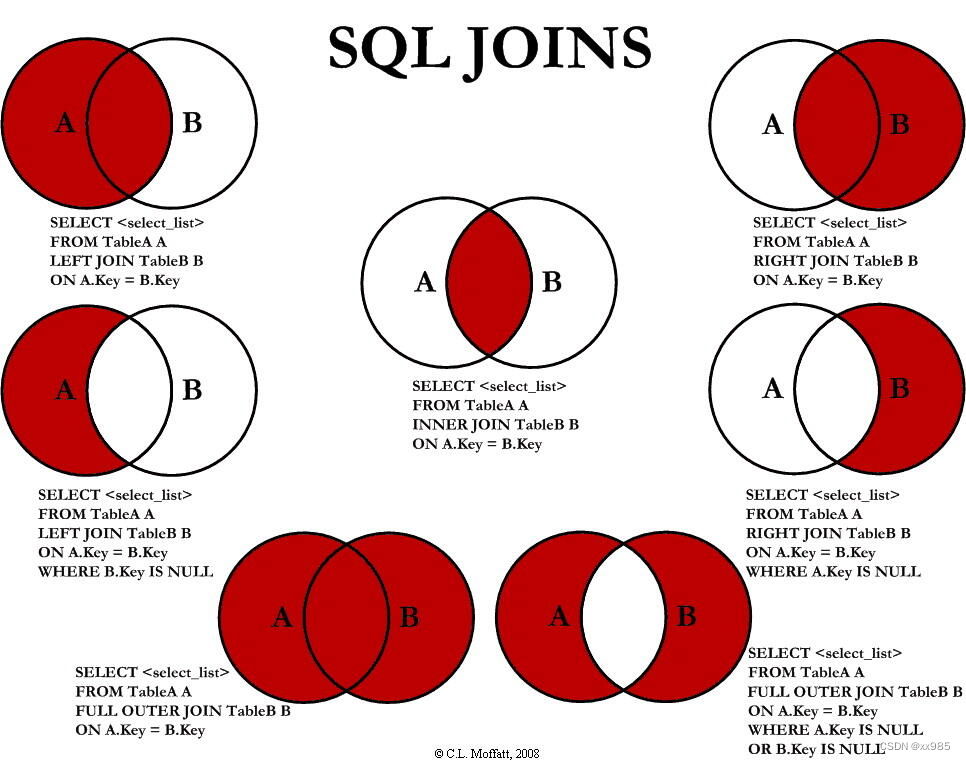
一对多关联关系
??????? 根据顾客查询该顾客下的所以订单
? 客户和订单就是典型的一对多关联关系.
? 一个客户名下可以有多个订单.
? 客户表是一方,订单表是多方.客户一中持有订单的集合.
? 使用一对多的关联关系,可以满足查询客户的同时查询该客户名下的所有订单.
<mapper namespace="com.bjpowernode.mapper.CustomerMapper">
<!--
//根据客户的id查询客户所有信息并同时查询该客户名下的所有订单
Customer getById(Integer id)
实体类:
//customer表中的三个列
private Integer id;
private String name;
private Integer age;
//该客户名下的所有订单的集合
private List<Orders> ordersList;
-->
<resultMap id="customermap" type="customer">
<!--主键绑定-->
<id property="id" column="cid"></id>
<!--非主键绑定-->
<result property="name" column="name"></result>
<result property="age" column="age"></result>
<!--多出来的绑定ordersList
Orders实体类:
private Integer id;
private String orderNumber;
private Double orderPrice;
-->
<collection property="ordersList" ofType="orders">
<!--主键绑定 这里是oid,就是下面查询的别名-->
<id property="id" column="oid"></id>
<!--非主键绑定-->
<result property="orderNumber" column="orderNumber"></result>
<result property="orderPrice" column="orderPrice"></result>
</collection>
</resultMap>
<select id="getById" parameterType="int" resultMap="customermap">
select c.id cid,name,age,o.id oid,orderNumber,orderPrice,customer_id
from customer c left join orders o on c.id = o.customer_id
where c.id=#{id}
</select>
</mapper>这里使用左连接 
比如王五没有下订单,所以查出的结果应该是
![]()
?![]()
如果不这样写会返回null;
多对一关联关系.
??????? 根据订单查下单的顾客
? 订单和客户就是多对一关联.
? 站在订单的方向查询订单的同时将客户信息查出.
? 订单是多方,会持有一方的对象.客户是一方.
?
<mapper namespace="com.bjpowernode.mapper.OrdersMapper">
<!--
//根据主键查询订单,并同时查询下此订单的客户信息
Orders getById(Integer id);
-->
<!--
手工绑定数据
实体类
private Integer id;
private String orderNumber;
private Double orderPrice;
//关联下此订单的客户信息,多方持有一方的对象
private Customer customer;
-->
<resultMap id="ordersmap" type="orders">
<!--主键绑定-->
<id property="id" column="oid"></id>
<!--非主键绑定-->
<result property="orderNumber" column="orderNumber"></result>
<result property="orderPrice" column="orderPrice"></result>
<!--多出来的绑定
private Integer id;
private String name;
private Integer age;
//该客户名下的所有订单的集合,一方持有多方的集合
private List<Orders> ordersList; //不用管
-->
<association property="customer" javaType="customer">
<id property="id" column="cid"></id>
<result property="name" column="name"></result>
<result property="age" column="age"></result>
</association>
</resultMap>
<select id="getById" parameterType="int" resultMap="ordersmap">
select o.id oid,orderNumber,orderPrice,customer_id,c.id cid,name,age
from orders o inner join customer c on o.customer_id = c.id
where o.id=#{id}
</select>
</mapper>
一对一关联
?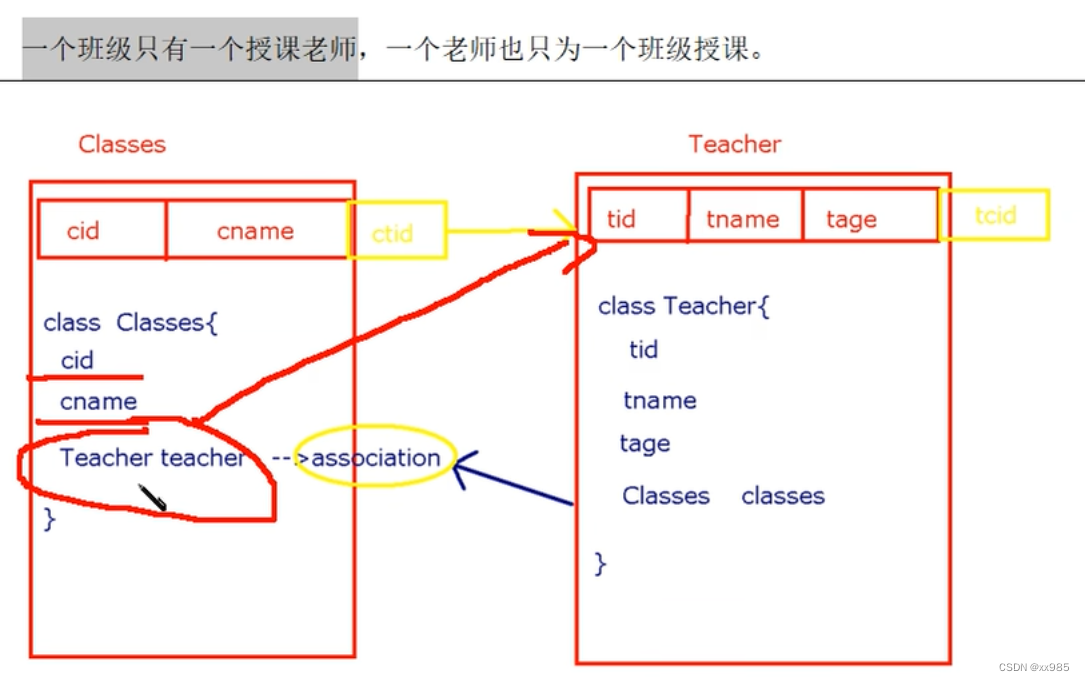

多对多关联
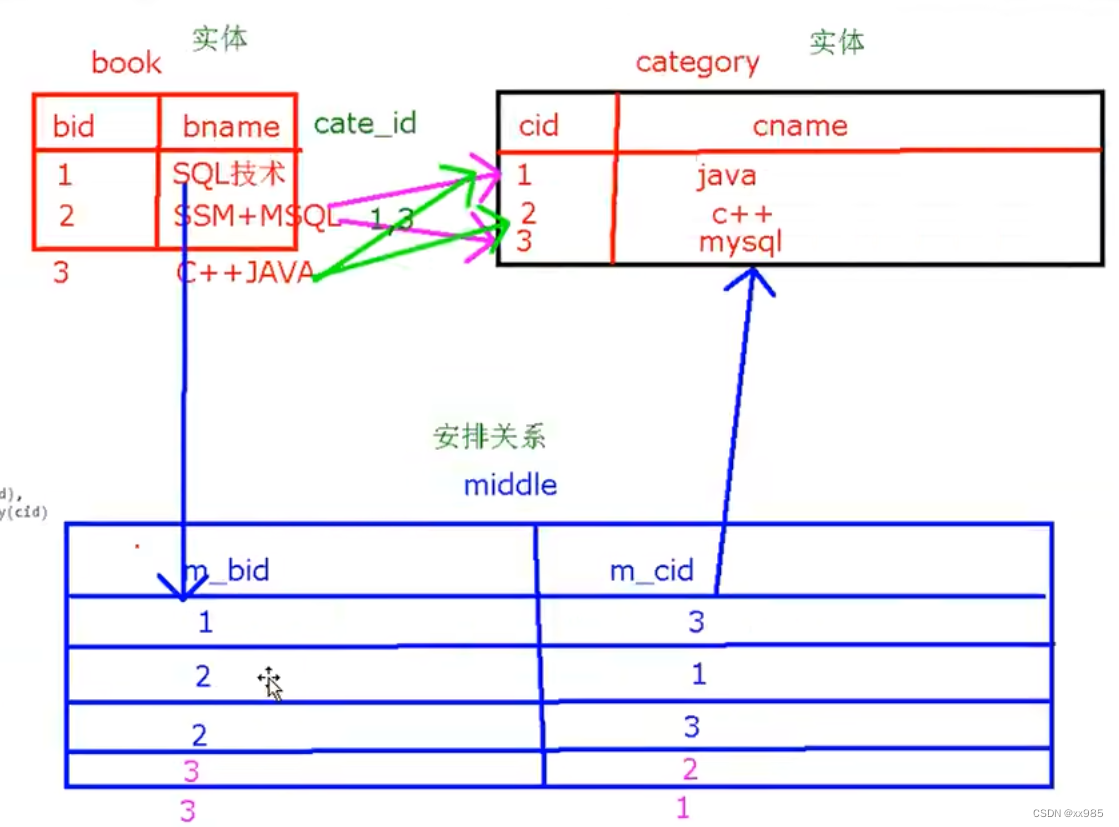
?
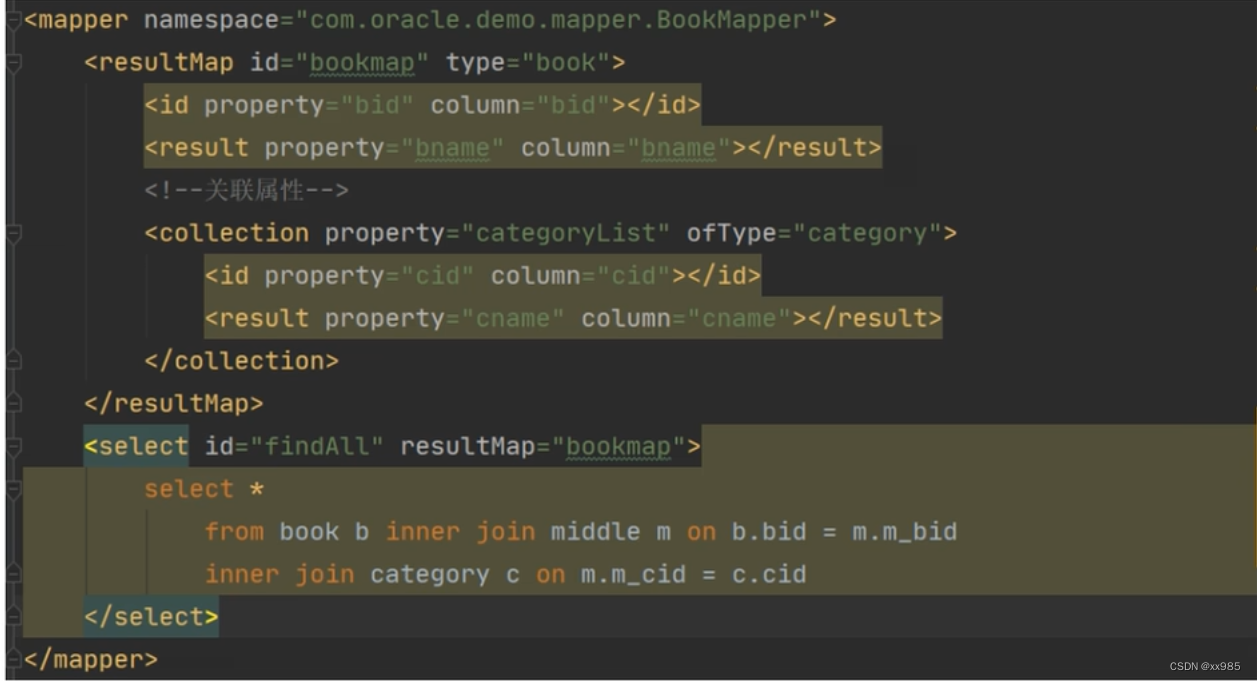
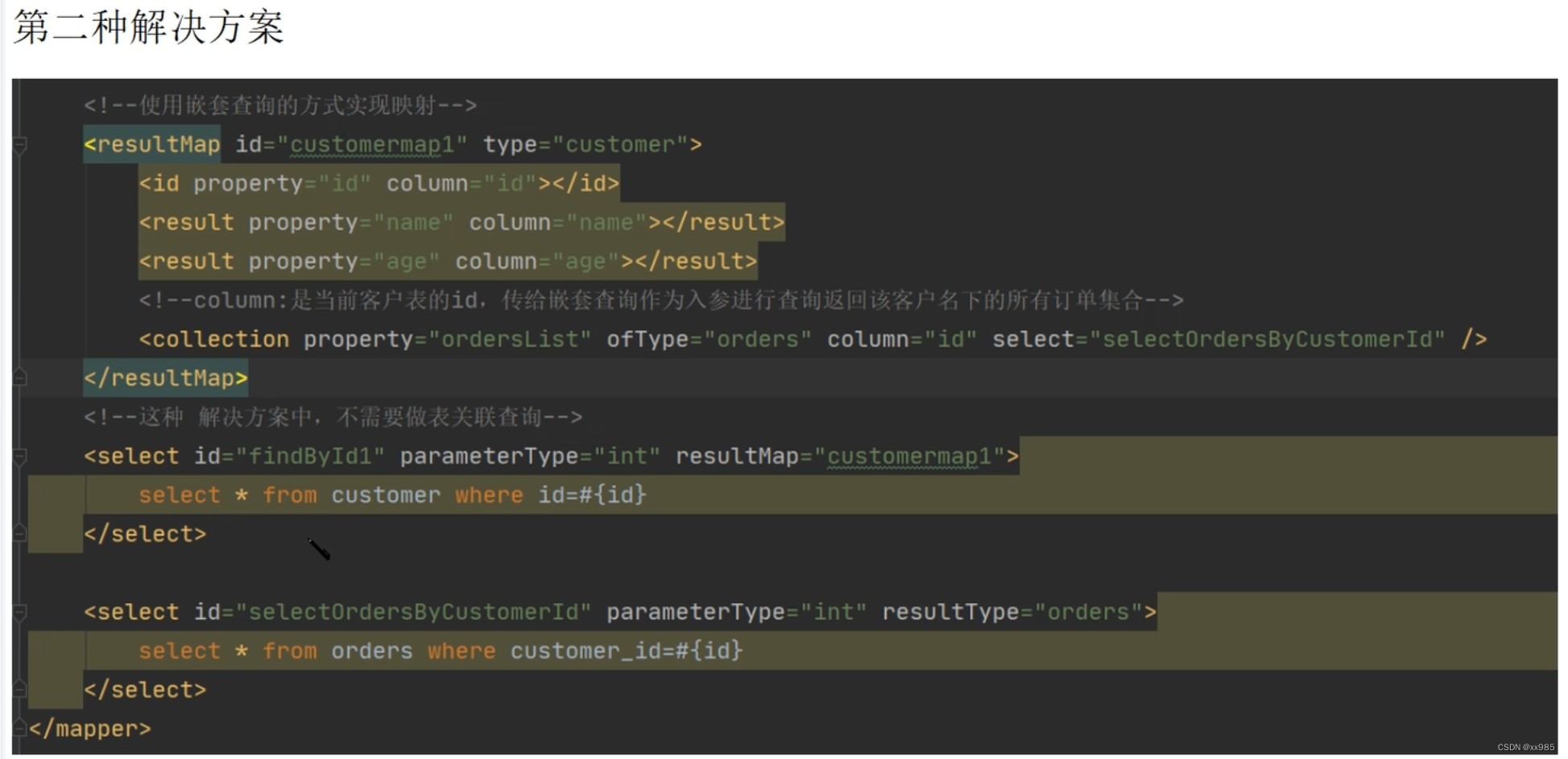
?最终方法
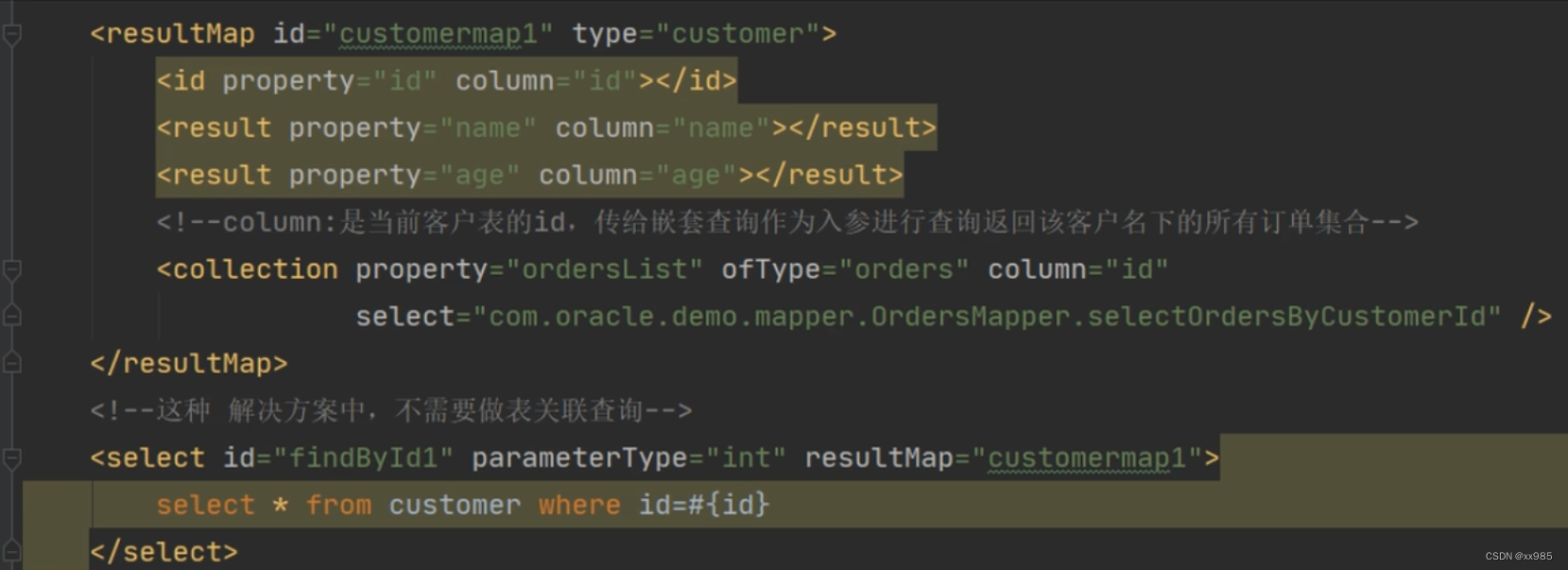

和一对多差不多
? 总结:无论是什么关联关系,如果某方持有另一方的集合,则使用<collection>标签完成映射,如果某方持有另一方的对象,则使用<association>标签完成映射。
事务(acid)一致性,持久性,原子性,隔离性
? 多个操作同时完成,或同时失败称为事务处理.
? 事务有四个特性:(acid)一致性,持久性,原子性,隔离性.
? 下订单的业务:
? 1)订单表中完成增加一条记录的操作
? 2)订单明细表中完成N条记录的增加
? 3)商品数据更新(减少)
? 4)购物车中已支付商品删除
? 5)用户积分更新(增加)
? 在MyBatis框架中设置事务
? <transactionManager type="JDBC"></transactionManager>?
? 程序员自己控制处理的提交和回滚
? 可设置为自动提交
? sqlSession = factory.openSession();? ===>默认是手工提交事务
? sqlSession = factory.openSession(true);? ===>设置为自动提交,在增删改后不需要commit();
缓存(默认开启一级缓存)
? 缓存就是为了提交查询效率.
? MyBatis框架提供两级缓存,一级缓存和二级缓存.默认开启一级缓存.
? 使用缓存后,查询的流程:
- ????????查询时先到缓存里查,如果没有则查询数据库,放缓存一份,再返回客户端.
- ????????下次再查询的时候直接从缓存返回,不再访问数据库.
- ????????如果数据库中发生commit()操作,则清空缓存.
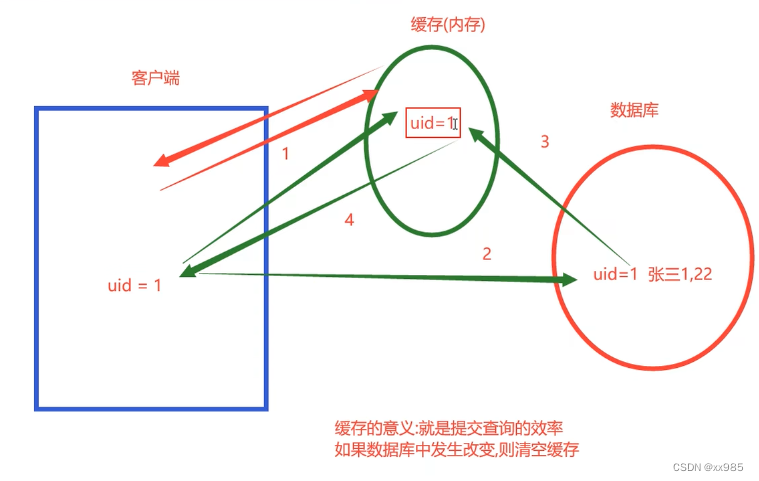
?缓存的作用域
????????一级缓存使用的是SqlSession的作用域,同一个sqlSession共享一级缓存的数据.
????????二级缓存使用的是mapper的作用域,不同的sqlSession只要访问的同一个mapper.xml文件,则共享二级缓存作用域.
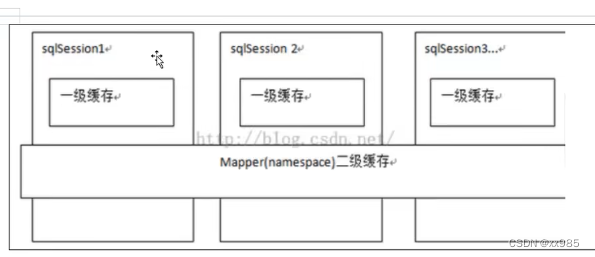
什么是ORM(对象关系映射)
? ORM(Object Relational Mapping):对象关系映射
? MyBatis框架是ORM非常优秀的框架.
? java语言中以对象的方式操作数据,存到数据库中是以表的方式进行存储,对象中的成员变量与表中的列之间的数据互换称为映射.整个这套操作就是ORM.
? 持久化的操作:将对象保存到关系型数据库中 ,将关系型数据库中的数据读取出来以对象的形式封装
持久化
从内存读取数据到数据库,从数据库读取数据到内存,这个过程称为持久化
? MyBatis是持久化层优秀的框架.
总结

?
